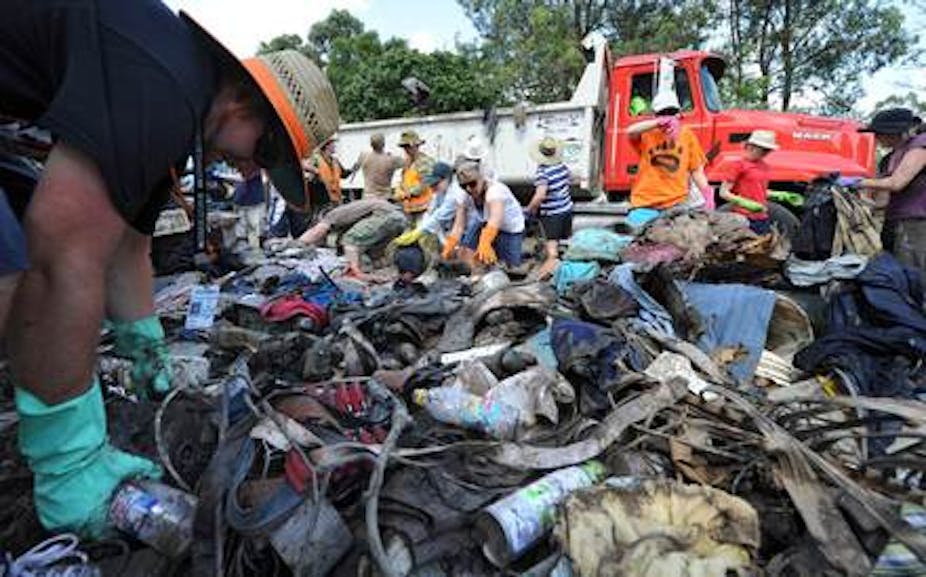
When disaster strikes, people step up to help. But all too often the management of those willing volunteers becomes a disaster in its own right. We need to improve our emergency planning now, because we simply don’t know what’s around the corner.
February 2011 in Queensland was of the worst of times. Massive floods had hit the region followed by cyclone Yassi, which brought death, injury and loss of property for many.
But it was also the best of times. Over 80,000 people registered to volunteer and many more spontaneously pulled on their gumboots and rushed to help wherever help was needed. It became the largest incident of mass volunteering in Australia.
As in other disasters, the community reached out, because tragedy increases the willingness to volunteer and donate.
Such events leave us feeling helpless, exposed, fragile and alone, and volunteering is a way of overcoming such feelings and becoming empowered once more.
Volunteer action in disasters is among the most visible faces of volunteerism.
While 34% of Australians volunteer each year, in rural areas the rate is much higher.
This is because the psychological sense of community there is stronger, and also due to the fact that many emergency and other essential services rely solely on volunteers.
What Australia witnessed in Queensland was the positive outcome of a similar sense of community felt by people who were victims as well as by their friends, family and neighbours.
Studies show that such volunteering also creates a sense of community, so even after these difficult times in Queensland the strong community spirit is expected to continue.
But due to the large number of people wanting to volunteer in a very short period, and the difficulties in preparing for this, it becomes chaotic.
Following the Queensland floods and cyclone, as with the Victorian bushfires, the volunteer registration websites crashed. Managers of these websites were unable to direct the volunteers and facilitate their volunteering.
Too many people who registered could not volunteer, and others were going around in buses for hours looking for a place which could use their help.
There are additional issues such as assuring that all volunteers are safe, have the right skills and equipment, and even receive emotional support afterwards.
Studies show that disaster relief volunteers may suffer post-traumatic syndrome years after they helped.
In the aftermath of 9/11, people were called to volunteer but were not given safety gear or emotional support. Many reported suffering from post-traumatic distress three years later.
A multi stakeholder approach is needed here: governments, the not-for-profit and the business sectors should work together in times of peace and quiet in order to be prepared for times of need.
Technology companies could create websites which will direct spontaneous volunteers to help in the places and times in which they will be needed the most (with, for example, reminder emails).
Often people want to help in the very first days of the disaster, but in fact help is as needed during the weeks and months afterwards.
Leading corporations could also use their servers in times of disaster to host the volunteer websites and avoid crashes.
The business sector can further provide appropriate safety gear and equipment. Organisations who use volunteers need to provide emotional support to them after the event.
But this collaboration needs to be planned and acted upon well before the disaster occurs.
With climate change, the sad reality is that other disasters may still come, and now is the time to get prepared.
A good example from the US is the “Ready When the Time Comes” program, in which over 10,000 employees from 300 companies have been trained by the Red Cross Society to be response ready as a community-based volunteer force when disaster strikes.
Disaster relief volunteering can be seen as the best of society during the worst of times.
Managed well, volunteers can provide the much-needed help to overcome the terrible outcomes of such disasters.
The community spirit also helps victims of such disasters to feel comfort in the fact that the community cares for them.
However, when not well managed, further distress and trauma may occur.
Preparations well in advance may assure that communities work well together for everyone’s sake.

